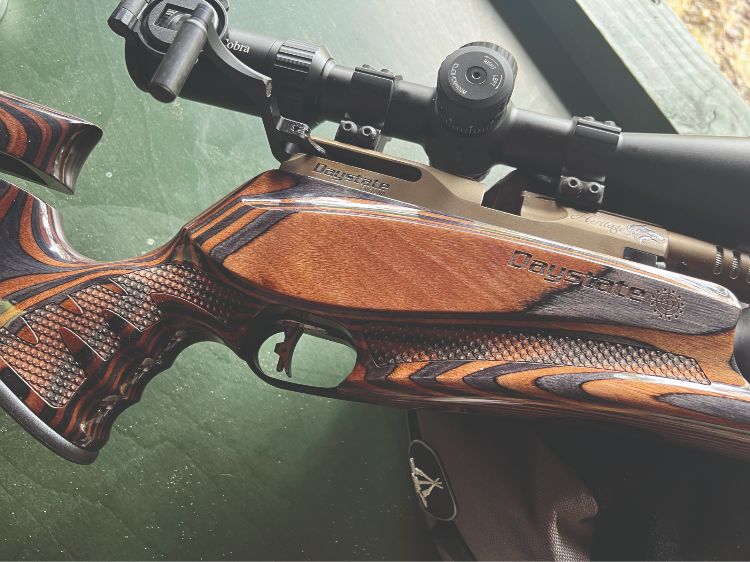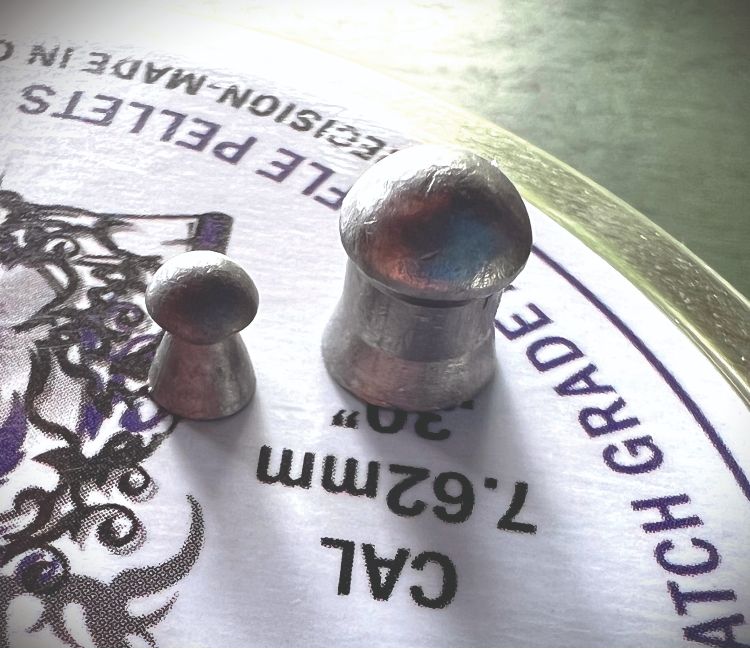The absolute essence of modern airgun shooting is the precise placement of a projectile that carries sufficient energy to get the job done. That job could be the despatch of vermin, or the accumulation of points through targets hit, and not least, the pure pleasure of consistently hitting what we aim at. This formula applies, of course, to most forms of rifle shooting, but within that basic brief lies a factor that sets air-powered rifles apart; their pure ‘manageability’, when it comes to muzzle energy and its application. In basic terms, air rifles can be used effectively, safely, and practically in circumstances where live-ammo rifles would struggle to do so.
The 6 ft.lbs. target models can transport their users from paper target matches in village halls, all the way to Olympic glory, whilst their sub- 12 sporting counterparts help their operators to clear countless head of vermin from factories, farm buildings, stables and livestock pens, and all without smashing up these valuable premises. Meanwhile, these days, when extra reach and energy-transfer is required, larger calibre, higher-powered air rifles can step up to fill the gap between air rifles and live-ammunition firearms. Right now, long-range bench rest tournaments, some with big-money prizes, are taking place around the world, and the versatility of the modern air rifle is almost as impressive as the rifles themselves. Almost ... but not quite. Shooting the ‘new generation’ of air rifles is still the real deal.
 This is the sublime Red Wolf Heritage
This is the sublime Red Wolf Heritage
ON SAFARI
I recently had the chance to explore the potential of a modern, high-powered supergun, in the form of Daystate’s Red Wolf, in its .30 calibre, 80 ft.lbs. Safari set-up. I was extremely keen to shoot that monster of a rifle, and a selection of its high-power stablemates, for two main reasons. First, I’ve just finished several months of testing the prototype and production versions of the .177 Red Wolf Grand Prix competition rifle, plus I’ve owned a Daystate Red Wolf Heritage in the same calibre for over a year, and I really wanted to compare the ultra-precise delivery of those sub-12 instruments of accuracy, to the targetpummelling performance of the Safari. What would be gained, or possibly lost, in the transition from 11-plus ft.lbs. via an 8.4 grain pellet, to putting 80 ft.lbs. of muzzle energy behind a 50 grain, leadalloy shuttlecock? My second reason for testing rifles right across the energy-output range was more fundamental. I just wanted to satisfy myself that, not only was the future of air rifle shooting more secure than ever in terms of available performance, but also that the quest for longer and longer range effectiveness hadn’t come at the cost of that ‘essence’ I mentioned at the start of this feature.
ALL THE GEAR …
To satisfy my curiosity and my mind, I met Daystate’s main man, Tony Belas, and Airgun World’s own Richard Saunders, at the excellent Reading Air Target Shooting Club ranges, in Berkshire. Tony had with him an entire carload of Daystates, BRKs, and related equipment, and Richard came equipped with all manner of cameras, his unstoppable enthusiasm, and a bucket of ice cubes for later use. I had only my own, .177, sub-12, Daystate Air Wolf Heritage, which I know insideout, and represents the upper levels of civilised, refined, near-silent accuracy, in the nearest direct comparison, design wise, I could get to the 80 ft.lbs. Safari. This was shaping up to be an extremely interesting day, and that’s exactly what it turned out to be.
 Little 'n' large. The 8.4 grain .177 is dwarfed by the 50 grain .30
Little 'n' large. The 8.4 grain .177 is dwarfed by the 50 grain .30
TESTING, TESTING, TESTING
Before I got down to the downrange performance evaluation, I needed to run through the basics, and the first of these was the difference in cocking effort between a rifle set up to deliver 11-plus ft.lbs., and one offering over seven times that amount of muzzle energy. Well, this test was a non-starter, of course, because the Red Wolf is one of Daystate’s electronic rifles, and its sidelever merely arms the computer-controlled action, rather than compressing a powerful hammer spring, so there’s no discernible difference throughout the entire range of available muzzle energy levels.
It was the same with trigger performance, for pretty much the same reasons. The Red Wolf’s electronic trigger mechanism isn’t required to mechanically dissipate the retained energy of a hammer spring, because it’s basically a switch that authorises the release of the shot. Thus, that trigger/switch can be safely set just about as finely as human sensitivities allow. I’m not one for stupidly light trigger settings, but for ultimate clinical accuracy off a test bench, I don’t mind a lighter-than-usual trigger, and the .30 calibre Safari’s was set like a match rifle.
SOME YOU WIN … SOME YOU LOSE
Now, just before I get into the downrange section of this feature, I need to verify the wins and losses of these air rifles, sitting as they do at the extreme ends of the performance scale.
Let’s begin with the obvious, and the huge disparity between each rifle’s available shots-per-charge. From a 250 bar charge, the 480cc reservoir of my Red Wolf Heritage will produce well over 400, regulated shots at 11.4 ft.lbs. in .177, and 500 in .22. The 80 ft.lbs. Safari produces just 30, full-power shots, from the same sized reservoir, charged to the same pressure. If this article was appearing on the internet, you’d expect one of those ‘shocked’ emojis to appear at the end of that comparison, but however you look at it, that is a serious muzzle energy/available shots trade-off.
A VERSATILE PLATFORM
Winding down this Safari’s action to a ‘mere’ 65 ft.lbs., in .22 or .25 calibre – the Red Wolf’s onboard computer makes the required adjustments as you toggle the various setup options on the rifle’s LCD screen – allows you to double your available shot count to 60, so a single recharge should see you through most extended rabbiting sessions. A muzzle energy of 30 ft.lbs., set for a .177 rifle, returns 150 perfect shots, and the prospect of this had me excited beyond any level of professionalism. Years ago, I ventured out with an experimental 30 ft.lbs. .177, and racked up 103 rabbits in three hours, from an overrun thoroughbred horse training facility, and I’ve wanted to explore that format more intensively ever since.
Anyway, at this early stage in my acquaintance with the Safari, I’d already realised that it was more shooting platform than single rifle, an impression confirmed by Tony Belas, as he loaded a series of the big gun’s 8-shot magazines.
MORE IS SOMETIMES LESS
There’s another ‘loss’, then; the amount of shots per magazine. My .177 allows me 13 per load-up, a .22 will hold 11, a .25 takes 10, and as stated, just 8 of the .30 pellets can be housed by Daystate’s removable rotary magazines. That’s nothing to do with efficiency, it’s just the size of the pellets, obviously, but it could be a factor for some.
Finally, let’s deal with a fact of pre-charged pneumatic airgun life where more is always more – and that’s muzzle noise. This is a major consideration, because the quiet efficiency of PCPs is a huge plus, especially when they’re used around livestock, or in any situation where excessive noise could be a problem. An unsilenced PCP, even in sub-12 mode, gives out a fair old bark on firing, and I was already wincing at the potential roar of the Safari, and not least because its only sound moderation would be provided by its barrel shroud. At the release of each shot, my Heritage Red Wolf, with its own shroud, plus a 0Db silencer, makes more of a ‘click’ than a blast, and even that sound is soon masked by the pellet impacting the target. As you can imagine, I was ‘interested’ to see, and hear, what the Safari sounded like.
To my genuine surprise, as I slipped the first 80 ft.lbs. shot of the day, there was no enormous muzzle crack, no rolling thunder across the Berkshire vales, and no chorus of terrified crows and pigeons as they erupted from the surrounding trees. Yes, the Safari has a potent, purposeful report, but it wasn’t anywhere near as severe as I’d expected. That barrel shroud definitely wasn’t just for show.
DOWN TO BUSINESS
It was time to test the big gun’s accuracy, and with the video cameras running, including a scope-cam on the Safari I was trialling, I settled to a ‘familiarisation tour’ of the targets, from 30 yards, all the way to 55. Yes, I know that this rifle has printed sub-inch diameter groups at twice that range, but that’s a test for another day. Today, I wanted to prove to myself that this ultra-high-power air rifle could do what the sub-12s can do, when it came to accuracy and shootability.
Using lead ‘splats’ on the black painted metal targets as my guide, I worked my way outward, five shots and five yards at a time. With the scope cranked up to its maximum magnification, I watched those silver splats overlap each other, time after time, right out to 55 yards, and while a .30 splat is far larger than a .177 splat, making the group size larger, the centre-to-centre stats were reassuringly familiar. This was accurate shooting, but it was far more than that.
THE PLEASURE PRINCIPLE
Shooting an 80 ft.lbs. PCP isn’t the same as shooting a sub-12 one. For a start, there’s recoil to deal with. As each .30 pellet left its barrel, the Safari’s sight picture lifted, then dropped, as the effect of recoil raised and lowered the rifle. This recoil is mild and entirely manageable, but it exists, and mismanaging it will affect downrange accuracy. For me, that’s another skill to be learned, based on the development of consistent handling, grip tension, gun-fit, and even the position of the rifle on the front rest, and the contact point of the butt pad in the shoulder. All of these components of good shooting technique apply to any recoiling rifle, and personally, I’d relish applying the demands of shooting a springer to a pre-charged pneumatic super-rifle.
More pleasure arrived when the ice cubes I mentioned earlier were set out on the top of the 45 yard target frames. These were simply there to be blown up by the huge .30 pellets, and I’m here to tell you that the grin factor went off the scale as ice cube after ice cube was splattered by direct hits.
Then, Tony produced various BRK and Daystate models, all configured differently to cover a vast range of applications, and the shooting pleasure continued uninterrupted. It was all captured on video, and I hope that will soon be available on our YouTube channel, Shooting & Country TV. I’m confident that the enjoyment of that session will come across as clearly to you as it did to me.
LESSONS LEARNED
My day at the Reading Air Target Shooting Club ranges was not only time well spent, it was a supremely satisfying experience, and on several levels. I now have no doubt that our sport offers hardware options that can satisfy a wider range of sporting and competition demands than ever before.
I also learned that, as sophisticated as these ‘superguns’ are, they still put a smile on the shooter’s face, just like our guns have been doing for over a century. The real takeaway, for me, was the undeniable fact that the essence of airgunning is not only alive and well, thanks to incredible rifles like Daystate’s Red Wolf – it’s capable of going truly global.